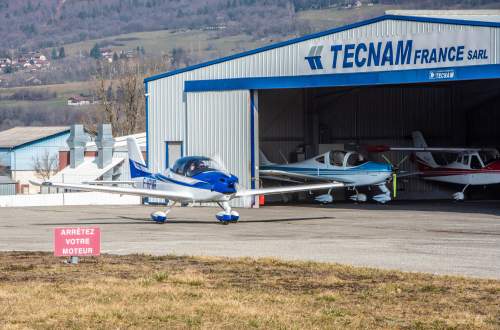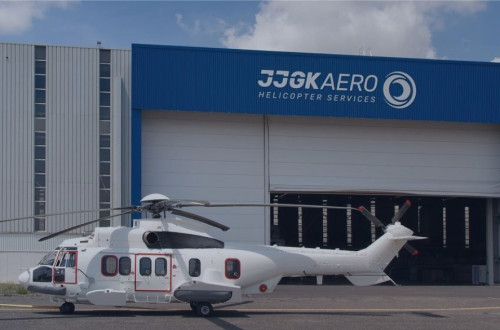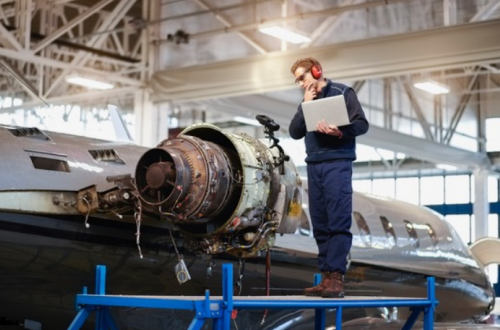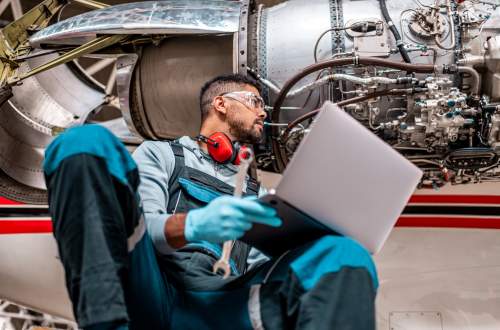Boeing 737 MAX 9
an incident that reveals a cultural change..
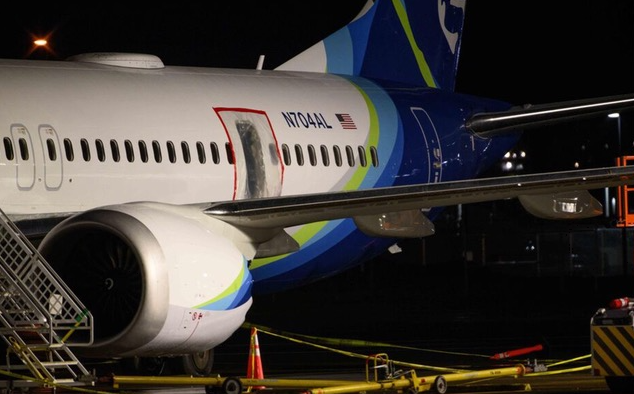
(Picture: Mathieu Lewis Rolland : AFP)
(Reading 3 min)
The facts
On January 5, a door of a Boeing 737 MAX 9 aircraft stood out in flight. A month after the incident, the inspectors' report is overwhelming: four screws were not put back on the device during a repair before it left the factory.
Reactions
An intolerable oversight for the director of the investigation. There is a problem with the audit process, said Jennifer Homendy, director of the National Transportation Safety Board.
For the experts it is all the quality control that must be revised at the American aircraft manufacturer. "We are on a repetition, a recurrence of defects, deviations from normal, certainly that the process is not properly carried out and that some employees were not careful enough, generally speaking, they must go up the level, they are now being attacked by aircraft manufacturers.”
Planes nailed to the ground
The Federal Aviation Administration (FAA), which regulates air transportation in the United States, stopped 171 aircraft of the same type. “Since we started preliminary inspections, we have found cases that appear to be related to installation problems in the door cap – for example, bolts that required additional tightening.”
Alaska Airlines also reported finding loose parts on some of its MAX-9s during preliminary inspections.
To return to the air, these 171 aircraft - of the 218 MAX-9s delivered to date - must be inspected. At the end of January, the American Civil Aviation Regulatory Agency (FAA) detailed the program to which they must be submitted. It consists of four points including the verification of specific fasteners as well as visual inspections of all cap holders and their components, and the repair of any damage or abnormal condition.
It is only after the plan is finalized that "the aircraft will be able to return to service," the FAA said, without specifying a date at this time.
Production lines at a standstill
The regulator also said it had informed Boeing of its refusal to authorize any expansion of the production of the 737 MAX family - the flagship aircraft of the American manufacturer - including that of the MAX-9. “Boeing has a very rigorous quality control system, but there has been a series of incidents over the past year that raise questions. It’s a question,” says Michel Merluzeau of the AIR specialized firm.
According to the expert, the consequences of the pandemic are “underestimated”, with many departures and a “mix of skills and talents” that has hindered the transmission of know-how and the training of new hires.
The group’s culture of profitability and the rise of Airbus as a significant competitor has led the group to make decisions to relocate its production centres to a less well-paid but less skilled workforce. “They went back five years. It is a company that seems to care more about profits than security,” Paul Argenti, a professor of corporate communications at Dartmouth University in New Hampshire, was accused on January 9 on CNBC. For journalist Peter Robison, he reports in his 2021 book Flying Blind, that the company’s slogan, «working together», has become «more for less». Boeing has moved from a culture of engineers to a culture of financiers and salespeople.
Broken reputation and heavy economic consequences
Already in the financial turmoil, there is a risk of loss of passenger confidence and a tarnished reputation for Boeing.
American Airlines, which owns the largest fleet of reconfigured versions with 79 aircraft, should not emerge unscathed from this episode. United Airlines has announced that it expects a loss for the current first quarter.
What are the action plans ?
In a press release, the manufacturer assumes responsibility for the incident and initiates a new plan to strengthen quality controls in factories.” Aengus Kelly, head of Aercap’s largest aircraft leasing company, says Boeing “cannot afford another misstep.”
Boeing “must now focus 100% on quality and safety. The financial criteria are totally secondary at this stage for the group’s future,” he says. The issue of profitability at the expense of safety is resurfacing and deserves to be put back at the heart of the debate.
For the Tracing Flight© teams it is urgent and essential that any aircraft manufacturer refocus on the issue of traceability, whether at the production line or during maintenance. Security cannot suffer from any concession, reports Patrick Hyppolite, founder and CEO of Tracing Flight©.
Given the growing difficulties in recruiting specialized technicians and retaining trained teams, implementing solutions that secure the monitoring of maintenance operations on aircraft and components makes sense.
In the Tracing Flight© range, the TracingLine©module can be operated in stand-alone mode or in conjunction with the TracingNav© airworthiness software, thus avoiding input errors, streamlining the flow of information and anticipation.
The TracingLine© software suite designed by our own traceability experts is intended for aircraft operators and maintenance operators.
It enables workshop managers and team leaders to:
- traceability of data, images and stakeholders (electronic signature)
- better work management with a history of operations by ATA, by aircraft, by technician...,
- an edition of the work files
- management of tools and revisions
- list the mechanic’s log (hours/ licenses)
Other multiple features of planning, resource optimization, inventory management are available and present solutions to reduce the costs and downtime of devices.
Request a demo will allow you to realize in a few minutes the ease with which you can secure your maintenance operations and optimize your resources. It is urgent to act.
▶️ Contact us : https://www.tracingflight.com/contact.php





